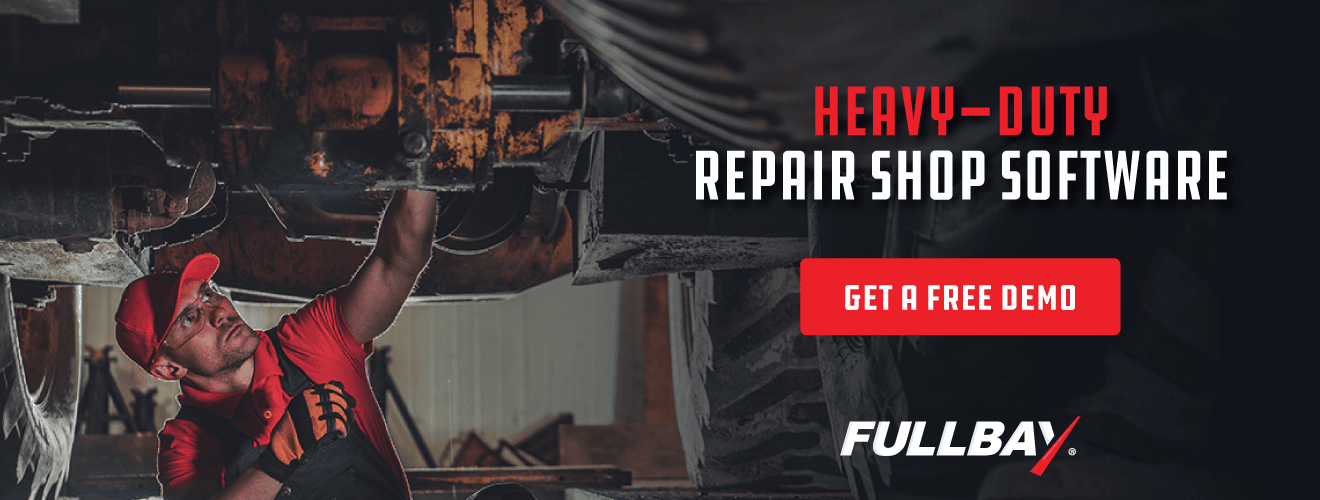Diesel Truck Shop Financials

We are constantly asked about truck shop financials. How should I be tracking my income? How detailed should my profit & loss statement be? Why should I care about accounting?
Watching your bank balance should NOT be the extent of your financial analysis. Especially when it comes to your truck shop financials. But this is the reality for many heavy duty truck shops. They will keep an eye on their bank balance, and leave the accounting to the accountants. Some barely use accounting software at all.
It doesn’t have to be this way. Tracking your truck shop financials can actually be very simple.

Keep your truck shop financials simple
Keep it simple! A messy profit & loss statement is like a messy toolbox: it’s no fun to use. On the other hand, a clean and simple P&L is a powerful tool for making your business successful.
When you first set up QuickBooks, you’ll probably have a bunch of default accounts thrust on you. Get rid of as many of these as you can. Here’s some advice on the income and cost of goods sold accounts you’ll want to track in a diesel repair shop.
Income accounts
The typical shop only needs to track the following income accounts in QuickBooks:
- Labor
- Parts
- Sublet
- Shop supplies
You might have the occasional exception; find a way to fit it into one of these categories if you can.
Resist the temptation to break these out further under the guise of “deeper analysis.” If you ever need to do deep dive analysis on your truck shop financials, you can always drill down and/or build a custom report in QuickBooks.
Cost of goods sold accounts
What about costs? In accounting, there is a concept called the “Matching Principle”. It basically means you need to match income to the expense incurred in creating that income. Follow this principle in your truck shop financials.
We have noticed many shops track the cost of buying parts, paying for outside services, and paying techs all in one single account: Cost of Goods Sold. This is not a good practice. It prevents you from easily tracking your profit margins. Instead, break out your costs as follows:
- Cost of labor
- Cost of parts
- Cost of sublet
If you do this you can quickly calculate your profit margin on labor, parts, and sublet separately.
What goes into the accounts
Here is a breakdown of what should go in each category.
Labor
Track your labor charges under Labor income. Track the cost of paying your diesel technicians under “Cost of labor”. It is import not to include the cost of managers and office staff in this figure. It should truly be the cost of paying your technicians, including any taxes and benefits. That way you have a clear view on whether you are charging enough to cover your costs plus have a healthy margin.
For example, if your target is a 50% margin on labor, you can quickly calculate your actual margin by subtracting “Cost of Labor” from “Labor” income, then dividing the difference into “Labor” income.
Parts
Track your parts sales (inventory and special order) under Parts income. Track the cost of buying parts in “Cost of parts”. Don’t include anything that is not sold to customers, since this will muddy up your margin calculation. You need to be able to quickly calculate that, for example, you’re clearing a 30% margin on all parts sales.
Sublet
Also known as “Outside service.” Sublet should include selling others services, like towing, windshield work, or managing a dealer repair for a customer. When the tow bill comes in, code it to “Cost of sublet” (or, depending on your part of the country, “Cost of outside service”). This way you can track at a high level that you are charging a decent enough margin for handling outside work. (The most common markup we see is 20%. See this article for a guide on the difference between markup and profit.)
Shop supplies
Track your shop supplies income in this account. Unlike the other three, it doesn’t have a cost counterpart. You can try tracking the cost of shop supplies, but timing differences usually produce inaccurate margin calculations. Items typically billed for via shop supplies — shop towels, cleaning supplies, etc. — are usually purchased infrequently and in bulk. In contrast, shop supplies income is typically included on every job.
So why track it separately from, say, parts? Simply so you don’t cloud up your parts margin.
The rest of the profit & loss statement
Of course, the income and cost of goods sold accounts are only have the P&L. The rest — lease payments, manager and office staff compensation, utilities, etc. — are simply overhead. Keep overhead at 10% of revenue or less. And keep these accounts simple as well. If you have more than 10 accounts in this section, find a way to consolidate.
Conclusion
Keep your financials simple and sharp. You’ll do better analysis with a clean, simple P&L anyway. By the way, Fullbay is natively integrated with all versions of QuickBooks (desktop and online). Check out what we’ve built by requesting a demo.

